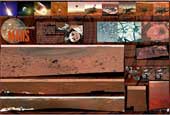
 |
|
|
|
It is important for scientists to remember that science, just like any other human activity, generates myths about itself, and most especially, about its perceived historical origins. And one myth that is being actively promoted in some quarters today, and which only dates back to the late Victorian period, is that science had to somehow break free from the superstitious shackles of the Christian region before it could develop. What Galileo Goes to Jail does, is to select 25 leading myths in this area and subject them to rigorous scholarly, evidence-based scrutiny, and draw conclusions. And while Professor Numbers introduces and writes one of the essay chapters, he is accompanied by 24 leading scholars, each an expert in their field, to write the others. The 25 chapters are arranged chronologically, spanning modern myths about Greek science, and on to present-day myths about creationism and secularism. Around nine essay chapters deal with specifically astronomical topics, most significantly, those myths about the supposed medieval flat earth (Lesley B. Cormack), Copernicus (Dennis R. Danielson), Giordano Bruno (Jole Shackleford), and Galileo (Maurice Finnocchiaro). Other essays deal with a variety of biological, medical and historical myths about science and religious belief. Of course, what the authors are saying is not especially new to scholars working in academic history of science, but I suspect that it will be very new to both scientific and wider popular culture readers. For no, the Church did not say that the Earth was flat. (A notion that really only took off in Washington Irvine’s life of Columbus in 1828). But in reality, the spherical earth, and its spherical and geometrical proofs, were actively bought in medieval Europe’s ecclesiastical universities. And what comes over very clearly, is that Bruno’s execution in 1600 came about because he was a renegade ex-monk who became openly contemptuous of Christianity (that was the rule of the game in 1600), and not because he was a Copernican. And no, Galileo was not tortured, and his condemnation had far more to do with him teaching Copernicanism as an unconfirmed truth, rather than about anything theological. (And let us not forget that both Copernicus and Bruno had been influenced by the other-worlds-than-ours writings of Nicholas of Cusa of 1460. And Nicholas had been a Cardinal of the Roman Catholic Church, and had died in his bed!). I warmly recommend Galileo Goes to Jail to all people interested in the historical relationship between science and wider culture, irrespective of their personal beliefs. For Ronald Numbers and his colleagues reminds us that, far from being purely objective in its approach, science is just as big a myth-generator as politics, cultural belief, sport or the entertainment industry. So be on your guard! Allan Chapman |
|
|
|
2009 Yearbook This 132-page special edition features the ultimate observing guide for 2009, a review of all the biggest news stories of 2008, in depth articles covering all aspects of astronomy and space missions for 2009, previews of International Year of Astronomy events and much, much more. This 132-page special edition features the ultimate observing guide for 2009, a review of all the biggest news stories of 2008, in depth articles covering all aspects of astronomy and space missions for 2009, previews of International Year of Astronomy events and much, much more.Infinity Rising  This special publication features the photography of British astro-imager Nik Szymanek and covers a range of photographic methods from basic to advanced. Beautiful pictures of the night sky can be obtained with a simple camera and tripod before tackling more difficult projects, such as guided astrophotography through the telescope and CCD imaging. This special publication features the photography of British astro-imager Nik Szymanek and covers a range of photographic methods from basic to advanced. Beautiful pictures of the night sky can be obtained with a simple camera and tripod before tackling more difficult projects, such as guided astrophotography through the telescope and CCD imaging.Exploring Mars  Astronomy Now is pleased to announce the publication of Exploring Mars. The very best images of Mars taken by orbiting spacecraft and NASA's Spirit and Opportunity rovers fill up the 98 glossy pages of this special edition! Astronomy Now is pleased to announce the publication of Exploring Mars. The very best images of Mars taken by orbiting spacecraft and NASA's Spirit and Opportunity rovers fill up the 98 glossy pages of this special edition!Mars rover poster  This new poster features some of the best pictures from NASA's amazing Mars Exploration Rovers Spirit and Opportunity. This new poster features some of the best pictures from NASA's amazing Mars Exploration Rovers Spirit and Opportunity. |
||||||||||||||||||||||||